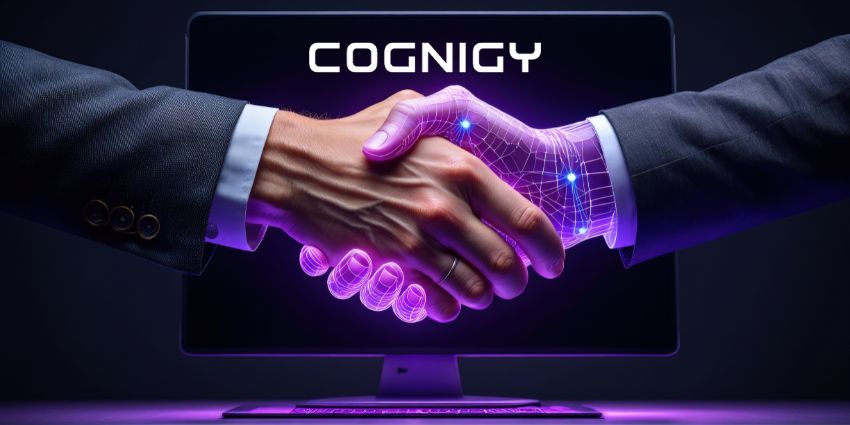For over a decade, omnichannel has been the talk of the CX town.
Why? Because it promises so much.
Consider some of the most significant frustrations within service experiences. These typically include customers having to repeat themselves, perceiving their time isn’t valued, and feeling like they’re just another number within a database.
The rise of omnichannel promised to make these problems of the past. Yet, they persist, irritating customers, annoying agents, and costing the business bucks.
Perhaps the biggest indicator of this comes from a recent PWC study, which found only 10 percent of UK companies are delivering a seamless omnichannel customer experience.
Much of this struggle relates to tech. For instance, some contact centers may have invested in boxed solutions when first implementing a digital channel – such as WhatsApp.
In doing so, they siloed data. That starved agents of customer context and limited the value of AI tools – such as customer journey analytics, personalization engines, and more.
Still this is a problem. Yet, with today’s CCaaS models helping connect all channels with a CRM and unify the agent desktop – contact centers can more easily build an omnichannel contact center.
Moreover, even if a service operation remains on-premise, it may now wrap an API around legacy channels and have the data flow into a CRM – paving the way for an omnichannel operation.
As such, outsiders may question why omnichannel is not yet mainstream.
However, while the tech is moving forwards, many contact center processes are not.
Remember the Early Days of Live Chat?
The beginning of the omnichannel hype came alongside the birth of live chat.
At that time, contact centers hoped to create an omnichannel environment to house the channel alongside voice and email.
In doing so, many aspired to shift telephone contacts from voice to live chat. There, agents could handle multiple conversations simultaneously – driving down costs.
That sounds ideal. Yet, the logic has flaws.
For instance, when a contact center opens up a new engagement channels, it makes itself available to a new subset of customers that previously avoided service interactions at all costs.
As such, many service operations experienced a significant uptick in contact volumes when adding live chat – which pushed service levels and occupancy rates to the brink.
Yet, that is only one example of the problems poor omnichannel process management can create.
Another happens when a customer spams multiple channels hoping to gain the faster answer, and receives different answers across each.
Next, go back to the strategy of deflecting queries to live chat. Contact centers often do this without realizing that some issues are quicker to handle on voice, increasing inefficiency. Those that require identification and verification (I&V) are classic examples of this.
Then, there are those agent considerations. “What happens when agents are up against the wall, or when customers are taking a long time to respond?,” asks Robert Ansell, Solution Sales Director at Cirrus Response.
“What about sharing documents, images, gifs, and so on – which add more layers to the conversation: is the agent handling this conversation appropriately? How do you filter out things that shouldn’t be said? All this needs careful planning.”
In failing to make many of these considerations, many contact centers suffered several setbacks when implementing live chat.
As a result, many applied sticky plaster solutions, put the brakes on further omnichannel development, and got back to the everyday firefighting that happens on the contact center floor.
“Many contact centers realized when first deploying live chat is not a silver bullet,” concludes Ansell.
“Omnichannel is often not a question of technology. It’s more about: are you ready?”
Get Ready for Omnichannel
As new channels come to the fore – such as WhatsApp, Google Business Messages, and even TikTok – contact centers must re-examine omnichannel.
Bolting the channel onto a multichannel environment will only cause more problems in the long run.
To avoid making the same mistakes and rushing into new pitfalls, Ansell advises:
“Establish a plan. That starts by highlighting why businesses want omnichannel. Is it to drive efficiency, become more attractive to digital-natives, or something else?
“Then, talk to peers, discover what they have done, and the challenges they have found along the way. That adds insight into the pitfalls they may have missed, which adds perspective.”
After, mull over all the people, process, and technology implications, building a picture to think the omnichannel environment will look like.
Finally, engage the c-suite and sell them on the story of why omnichannel is a must. That backing will help to overcome any additional issues.
Cirrus Response Delivers White Glove Service
Cirrus Response is a CCaaS vendor that not only delivers omnichannel environments but steers its customers on how to mange the people and process changes that come with the tech.
From the very first stages of clarifying the motivation for omnichannel to developing a plan to shift agents to the system, the vendor delivers the white glove service every contact center needs.
Heck, Cirrus will even provide the analytics that supports continuous omnichannel optimization.
To discover more about how Cirrus can support your omnichannel contact center transformation, visit Cirrus Response.







